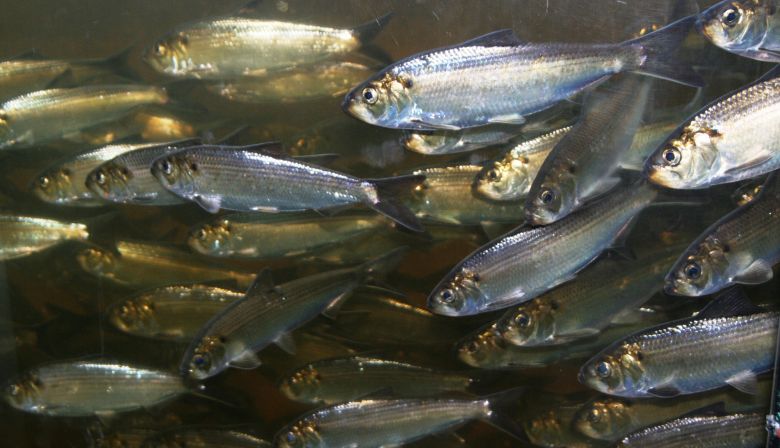
Subscribe & stay up-to-date with ASF

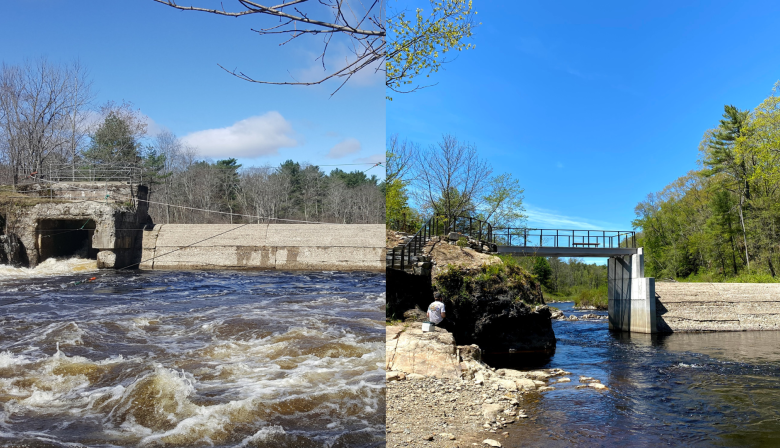
This summer, Maine is breaking records: the most river herring ever counted and the second most Atlantic salmon since 2000. Not long ago, this abundance would have been impossible. Some estimates figured more than 90% of Maine’s salmon habitat was blocked by dams and other obstructions.
Enter Andy Goode and the dam-busting team at ASF. Andy is ASF’s Vice President of U.S. programs and has led dozens of river reconnection projects throughout the state, from large dam removals to fixing small stream crossings.
In fact, ASF’s Maine team has arguably reconnected more freshwater habitat to the sea than any other organization, and decades of hard work is paying off.
Andy sat down recently to answer some questions about river restoration in Maine, a bumper year, and what the future has in store for Atlantic salmon and all other sea-run fish species.
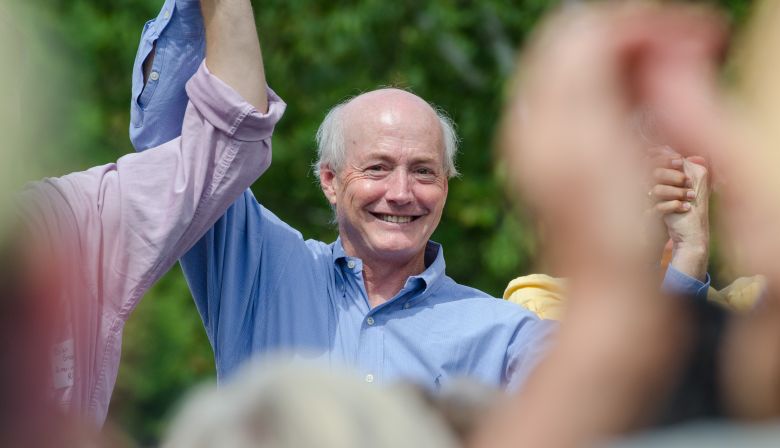
ASF: As somebody who goes back to the beginning of the major restoration efforts in Maine, how would you characterize 2023 in terms of sea-run fish in the state?
Andy Goode: The early returns have been fantastic so far. We have been in an upward trend for the last two decades since we started taking out dams, starting with the Edwards Dam on the Kennebec River in Augusta in 1999. Still, this year looks to be a banner year, at least where we have counting facilities like the Kennebec and the Penobscot.
Right now, on the Penobscot and the Kennebec, we are at over 6 million river herring. Those two runs alone are the two largest runs on the East Coast and river herring range all the way from Georgia well up into New Brunswick and Quebec, so it has been a big success story.

ASF: What was your inspiration in the ‘90s and early 2000s when you started the Penobscot River Restoration Project to breathe some life back into that watershed?
Andy: Back in 1999 or 2000, we started looking at the southern range of Atlantic salmon and one thing that was evident here in Maine is that we didn’t have any functioning big river. We had a lot of smaller, mid-sized rivers, but if you looked at our big rivers, they were heavily dammed and just weren’t functioning very well.
We thought over the long term that we needed to get back a large, functioning river in the southern range of Atlantic salmon. We had a critical mass of Atlantic salmon in the Penobscot—it was a river that was not as heavily dammed as some of the other rivers.
ASF had a long history of trying to prevent other dams from being built on the Penobscot, and we were successful in that along with our Maine Council, so instead of playing defense, we started playing offense on the Penobscot. Initially, we worked behind the scenes with other conservation groups and then, eventually, with the state and federal agencies to put together a comprehensive deal on the Penobscot.
We also were one of the first to recognize that salmon evolved with other species like smelt, river herring, sea lamprey, and shad, and they all depend on one another, so to restore a run of Atlantic salmon in a big river in Maine, we needed to restore all 12-species of native migratory fish.
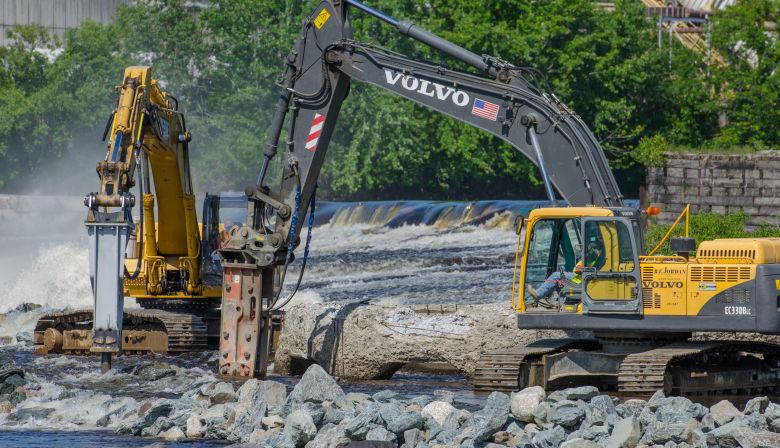
ASF: It’s always struck me with the work that you and the team in Maine do, that half of it seems to be working with the communities, and half of it is engineering and the technical aspects of removing obstacles to fish passage. How have communities responded to the major rebound in sea-run fish since the early 2000s?
Andy: We often go into these communities and are asked how we know that the fish are going to come back if we remove a dam. Over time, as we’ve removed dams or we’ve built fishways, the fish have responded, so we can point to that success.
There’s a lot of cultivation, education, and trust-building that ASF does in the communities where we work. It’s why many of these fish passage projects from concept to shovels in the ground take three to five years. It’s an iterative process of working with the local community to find out what their needs are and to find ways to meet those needs while also accomplishing our restoration objectives.
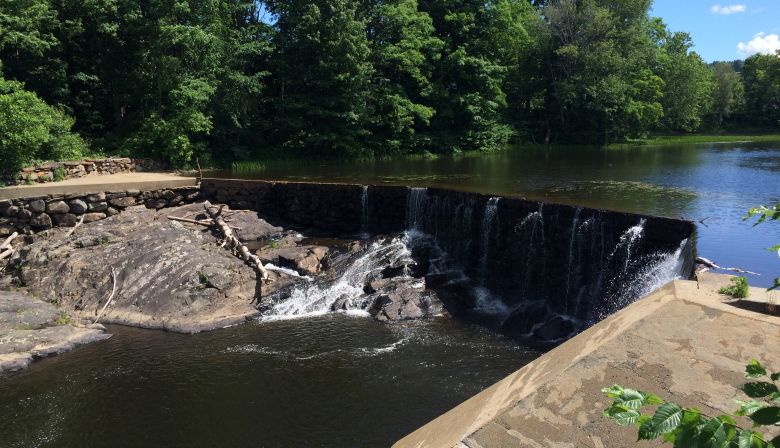
ASF: What does a rebound like we’ve seen on some rivers do for the broader ecosystem? Do other animals react to it?
Andy: There are ripple effects of the work that we do. For instance, we’re the Atlantic Salmon Federation so we’re interested in restoring Atlantic salmon, but the work we do to open these rivers for Atlantic salmon is helping all these other fisheries, but it goes well beyond fisheries. It also helps birds of prey like herons, eagles, and ospreys.
The largest aggregation of bald eagles on the East Coast of North America is in the state of Maine on the Sebasticook River in the Kennebec and they’re there because of the river herring run in April, May, and early June.
ASF: …and river herring can get into the Sebasticook because of an ASF project, right?
Andy: Yes, the Sebasticook is one of the lower, larger tributaries of the Kennebec River. In 1999, ASF worked with American Rivers, Trout Unlimited, and the Natural Resources Council of Maine to successfully remove the Edwards dam, but there was an agreement where smaller dams had to be removed and other fishways had to be built so that project also opened a lot of freshwater pond and lake habitat in the Sebasticook. Today, that one tributary alone has about four million river herring returning each year.
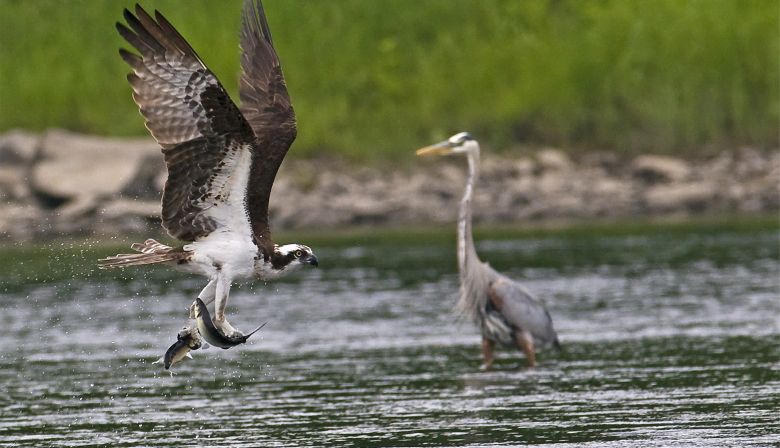
ASF: Have we reached capacity or is there still a lot of habitat that could yet be made accessible?
Andy: We have gone from zero river herring 25 years ago and now in the state of Maine we’re probably close to 15-20 million river herring across the state, if we could count them all, and that number keeps going up. The state of Maine is a success story, particularly compared with the rest of the East Coast. We have river herring, striped bass, sturgeon, and other species responding positively, and we also have a 10-year upward trend in Atlantic salmon. We have a lot further to go!
ASF: It seems that we’re hearing stories about successful dam removals on the east and west coasts of both the U.S. and Canada. Do you think that we’ve turned a corner in North America from building dams and blocking streams to more focus on restoring those connections to the sea?
Andy: I hope so. We are having such great success and you would think we could turn a corner, but we still find a lot of resistance. I think we will continue to make progress and we’ve been able to increase the pace of restoration here in Maine. Statewide, all the groups working together used to accomplish 1-2 projects a year. Now we’re doing up to 20 projects a year. We’d like to have this momentum continue to build and we hope public support builds up alongside.
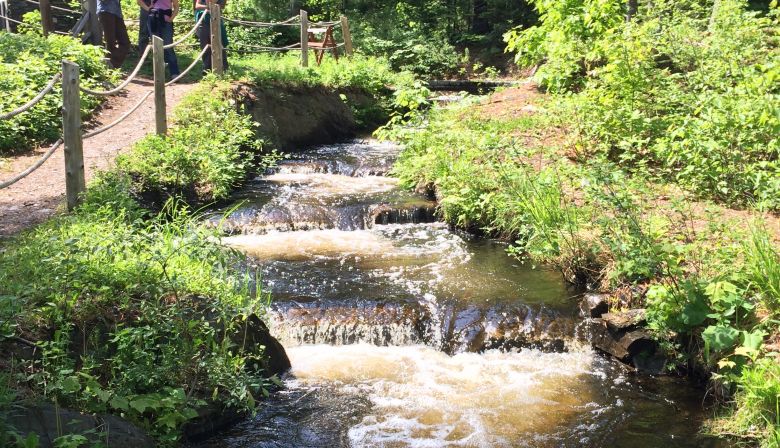
ASF: Have you ever been pleasantly surprised by a project?
Andy: Definitely. There’s a small tributary in the lower Penobscot River called Blackman Stream; it was one of our first projects. We built two fishways to get river herring into three different ponds. This is a stream that you can wade across in May with a pair of knee-high boots and it’s no more than 20 feet across. We knew it would get river herring back, but the run is anywhere from 750,000 to a million fish and it is literally bank-to-bank river herring in the spring. It’s great to see.
What’s also been great with that project is that one of the fishways that we built is at an old logging museum that’s open to the public. It is one of the few places in Maine where the public can go and see sea-run fish in big numbers. It’s very accessible and has become a popular site to visit from people all over Maine, so that’s a nice surprise.
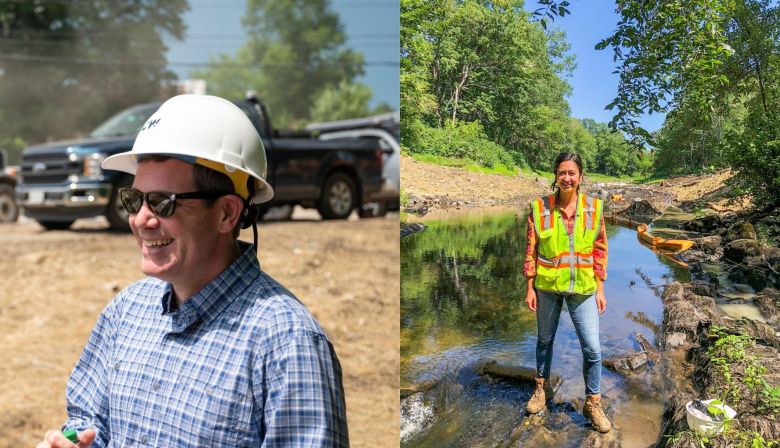
ASF: What’s your team working on right now?
Andy: We continue to focus on the Penobscot where we’ve got such a big investment and the Kennebec as well, along with some mid-coast rivers like the Sheepscot. The Penobscot covers about 1/3 of Maine and we’ve gone into the tributaries and opened access to the lakes and ponds and a lot of the spawning habitat for Atlantic salmon further up in the watershed. It’s such a big watershed, there’s certainly a lot more work to be done. Currently, we have a $1.8 million fishway being built this summer in the upper Penobscot to open another 8900 acres of pond and lake habitat for river herring.
ASF: Thank you, Andy, and your team for your excellent work!